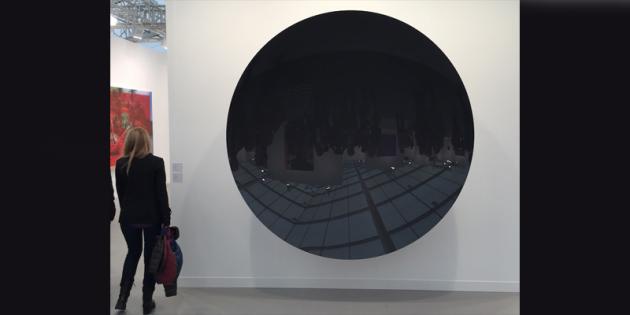The argument as to whether an artist can own the copyright to a colour or pigment has escalated this week with Anish Kapoor the Bombay-born, British artist. It seems Mr Kapoor has acquired exclusive rights to the unique Vantablack pigment, reported to be the blackest shade of black in existence. The paint was developed by British company NanoSystems and Vantablack is composed of a series of microscopic vertical tubes that become trapped when light hits it instead of bouncing off and deflected the light source between the tubes. It absorbs 99.96 per cent of light and is the darkest pigment in existence. It was originally developed for military and for astronomy equipment use.
The Turner Prize winner, who is best known for his magnificent, monumental mirror sculptures and the downright ugly Orbit/Mittel tower constructed for the London Olympics is currently the only person in the world who is allowed to paint using this colour, and has been doing so since 2014. He recently said in an interview; “It’s effectively like a paint, it’s so black you almost can’t see it,” he said. “It has a kind of unreal quality and I’ve always been drawn to rather exotic materials because of what they make you feel.”
This is, at least, the second time an artist has claimed exclusive rights to a particular colour. The French artist Yves Klein patented a deep shade of a matt blue, in 1960 and subsequently named it International Klein Blue (IKB). When Klein died in 1962, the colour was used by the artist/filmmaker Derek Jarman in his film Blue, and by performance company The Blue Man Group.
NanoSystems has confirmed that Kapoor holds exclusive rights to paint using Vantablack but this has outraged other artists including Christian Furr “I’ve never heard of an artist monopolising a material. Using pure black in an artwork grounds it,” he said. “All the best artists have had a thing for pure black – Turner, Manet, Goya. This black is like dynamite in the art world.” “We should be able to use it – it isn’t right that it belongs to one man,” he added. “
Photo: P C Robinson © artlyst 2016

